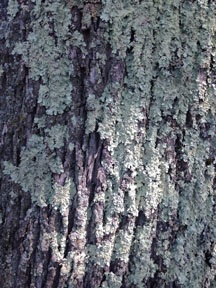 If you’ve never heard of lichen, you’re probably not alone. Lichen is a combination of two organisms,” and “Most of lichen is composed of fungal filaments, but living among the filaments are algal cells, usually from green algae or cyanobacterium.”[i] According to experts, there are more than 1,250 species of lichens in North America. In fact, a scientist from the University of Colorado Boulder discovered two new species in June 2015 while doing research in Boulder.
If you’ve never heard of lichen, you’re probably not alone. Lichen is a combination of two organisms,” and “Most of lichen is composed of fungal filaments, but living among the filaments are algal cells, usually from green algae or cyanobacterium.”[i] According to experts, there are more than 1,250 species of lichens in North America. In fact, a scientist from the University of Colorado Boulder discovered two new species in June 2015 while doing research in Boulder.
One of the main reasons that anyone should care about lichens is their ability to absorb trace elements from the environment. Because they are spread out around the world, their ability to absorb elements such as mercury provides a potential model for mercury contamination in a micro-ecosystem modeling system. Lichens are dependent on the atmosphere for their nutrients, making them susceptible to airborne and waterborne pollutants.
A recent study by the University of Alberta found that animals and humans in the arctic have some of the highest concentrations levels of methylmercury in their systems in the world. The scientists attribute the findings to the regional food chain. Caribou, which eat lichens as a primary food source, are traditional food for Artic natives. The scientists sampled lichens and soil from two islands in the Artic Ocean, Devon Island and Bathurst Island, to find out whether the mercury in the lichens was coming from the ocean and what percentage was methylmercury.
According to an article in Chemical & Engineering News, “The researchers used inductively coupled plasma mass spectrometry to measure levels of total mercury, methylmercury, and elements associated with the marine environment, such as sodium. The scientists found a median concentration of 4.27 ppb methylmercury in the lichens—about 100 times as much as in underlying soil. On ice-bound Devon Island, the levels of mercury were the same no matter where the samples were collected. But on Bathurst Island, lichens within 10 km of the coast had 10 times as much methylmercury and sodium as the lichens growing inland.”[ii]
The results of the research show that the mercury in the lichens was coming out of the ocean. Methylmercury in lichens is higher near open waters, so when caribou eat the lichens closer to the ocean, they accumulate higher levels of methylmercury. The mercury is then transferred to the native Artic people when they consume the caribou.
“Methylmercury is a potent neurotoxin that bioaccumulates and thus magnifies as it ascends through the food chain. This study is the first to make a clear link between mercury in the ocean and the toxin present in lichen consumed by caribou along the coast.”[iii]
Fortunately, the current low levels of mercury in the caribou are not a threat to humans. Scientists predict this could change, however, if the caribou become more dependent on the lichen as their food source.
Teledyne Leeman Labs recently published an Application Note to determine mercury levels in lichen using the QuickTrace M-7600 CVAAS Mercury Analyzer. Based on the results, the QuickTrace® M-7600 is an effective analytical technique for obtaining reliable quantitative data for trace levels of mercury.
[i] http://www.ucmp.berkeley.edu/fungi/lichens/lichens.html
[ii] http://cen.acs.org/articles/93/web/2015/04/Land-Animals-Pick-Methylmercury-Sea.html
[iii] http://norj.ca/2015/05/mercury-contaminating-caribou-lichen-on-arctic-coast/

